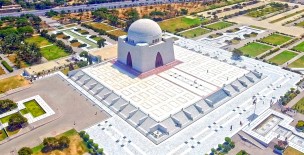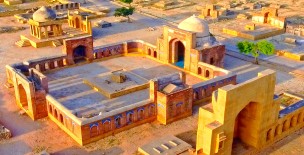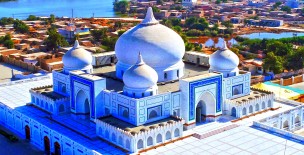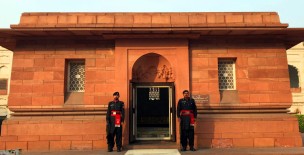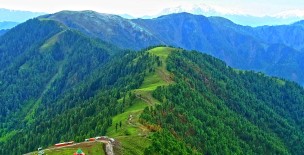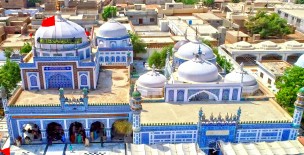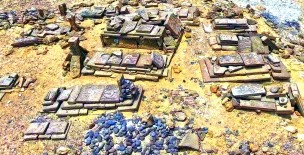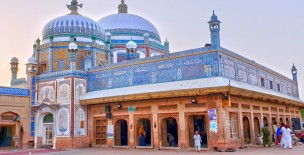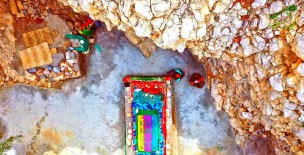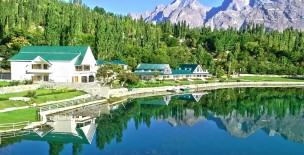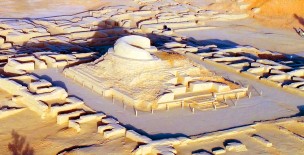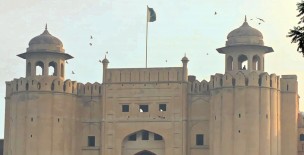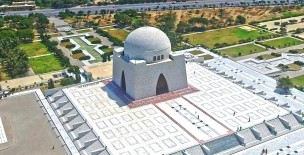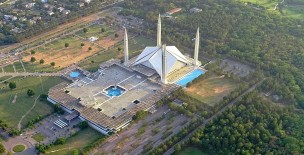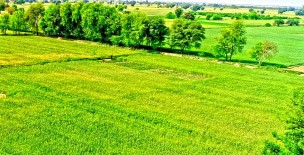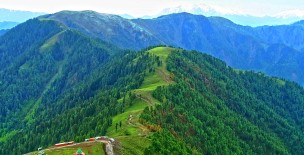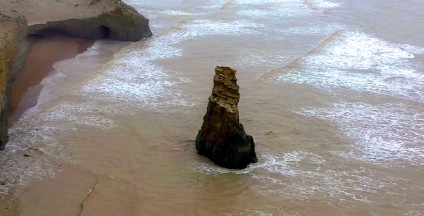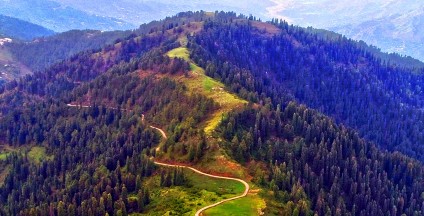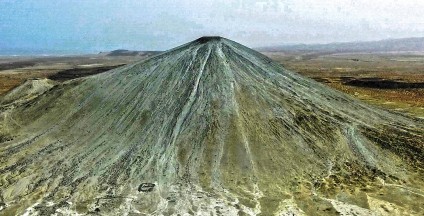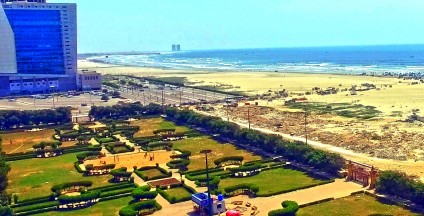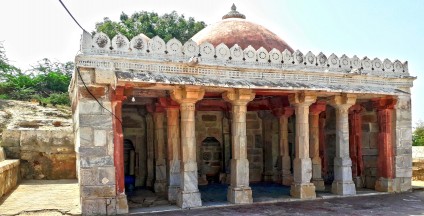Shah Hussain Marwandi or Shah Usman Marwandi (1143-44), popularly known as Lal Shahbaz Qalandar was a Sufi philosopher-poet of present-day Afghanistan and Pakistan.
He was called Lal ("ruby-colored") after his usual red attire and Shahbaz to denote a noble and divine spirit and Qalandar as he was a wandering holy man. He was Shia Muslim and Belonged to Imam Musa Kazim(A.S)Family. He was Syed Kazmi.
He lived when the Ghaznavid and Ghurids ruled in the Indus region.[3] A contemporary of Rumi, he travelled around the Muslim world and settled in Sehwan where he was eventually buried.
The shrine of Lal Shahbaz Qalandar was built in 1356 and decorated with Sindhi 'kashi-tiles', mirror-work and a gold-plated door donated by the Shah of Iran, Reza Shah Pahlavi and installed by the late Prime Minister of Pakistan, Zulfikar Ali Bhutto.
The inner sanctum is about 100 square yards with a silver-canopied grave in the middle, according to Nadeem Wagan, Cutharo silver donated by Sardar Mahboob Ali Khan Wagan (Chief Sardar of Wagan Tribe).
On one side of the marble floor is a row of about 12-inch-high (300 mm) folding wooden stands, on which there is a set copies of Quran for devotees to read. On the other side, beside a bundle of incense, are rows of oil-lamps lighted by devotees.
Thousands of devotees visit the tomb particularly every Thursday.
Lal Shahbaz's annual Urs (death anniversary celebration), held on the 18 Sha'aban – the eighth month of the Muslim lunar calendar, brings more than half a million pilgrims from all over Pakistan.
On each morning of the three-day feast the narrow lanes of Sehwan are packed with pilgrims, fakirs and devotees making their way to the shrine to commune with the saint, offer tributes and ask for their wishes.
(Sao Sumar) singing from 6am till 8am the next day. They invite bands of folk-singers (mandali) from different regions each year.
